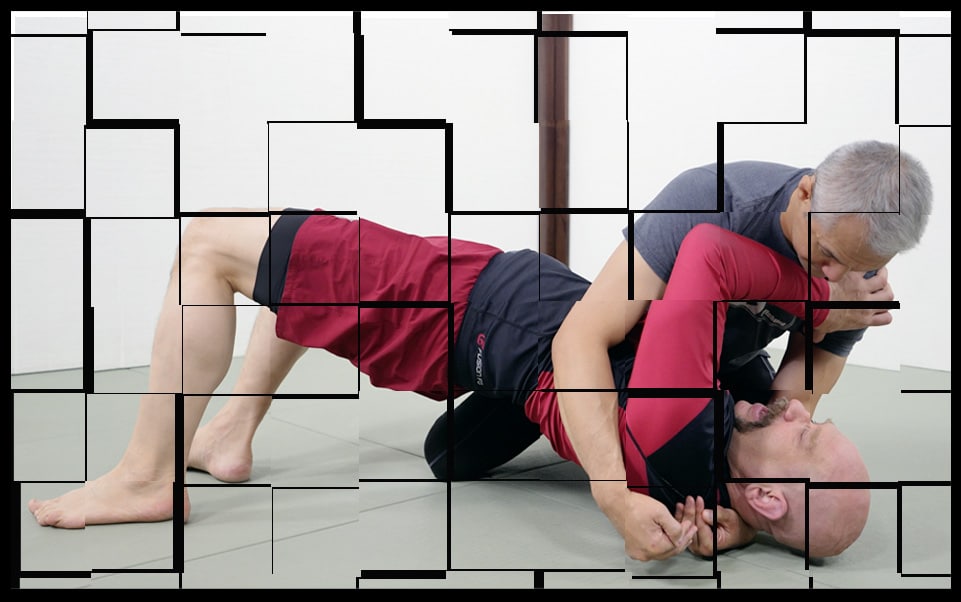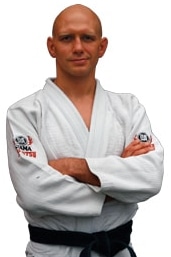
Mastering a new technique can seem overwhelming. There are so many steps, and for every action you take, your opponent might have 10 different reactions.
But there’s a relatively simple solution to the paralysing amount of material you need to internalise…
A journey of a thousand miles begins with a single step, and so does adding a new technique to your game. Start by mastering the first chunk of that technique!
This begs the question: what’s the first chunk?
Usually, it involves getting the arm position or grip you’ll need to perform the rest of the technique.
For example, if you’re doing an offensive technique, then the grip will allow you to disrupt your opponent’s alignment enough to begin your attack.
Say you’re in the butterfly guard and you want to attack with a triangle choke. Here’s my favourite way to set up the triangle choke…
The first chunk in this triangle attack sequence is getting the 2-on-1 control.
Once you have that grip you can focus on kicking out one of your opponent’s legs to further disrupt his base and structure. Then you can lock your egs into place and do all the adjustments you need to tighten the choke to get the submission.
BUT DON’T GET GREEDY AND DEMAND MASTERY OF THE WHOLE TECHNIQUE IN ONE TRAINING SESSION!
Instead of trying to hit the triangle choke from butterfly guard as many times as possible in a round, spend the whole round – heck, the whole training session – focusing almost exclusively on getting and maintaining that 2-on-1 grip.
Count each second of holding that grip as a victory, and don’t worry if you don’t finish a single triangle.
FIRST good at that chunk number one and THEN proceed to chunk number two.
Let’s take a look at another example: escaping from side control (taken from No Gi Pin Escapes)…
Chunk number one for this escape is getting your arms into position so you can disrupt your opponent’s posture, create a bit of space, and threaten to re-establish elbow-knee control.
Therefore, if you’re working on side control escapes, then count getting your near arm and your far arm into the right position as a victory, even if you don’t pull off any complete escapes.
In this case, the first chunk you need to master is achieving and maintaining your arm frames.
Then step two, three and four, but those can wait for another day!
Structure your training so that each chunk connects with the last thing you learned.
Be patient and make haste slowly; in the long run your progress will be MUCH faster!
Stephan
P.S. If you focus primarily on one thing for a while then your opponent will inevitably get better at defending it. This is GREAT for you – if he gets better, then you’ll have to raise the bar as well.
To butcher an old saying, a rising tide lifts the boats of both training partners equally.
P.P.S. Want more info about the 2-on-1 control? There’s no better resource than the Arm Drag and 2-on-1 Formula instructional I filmed with the illustrious Rob Biernacki.
P.P.P.S. One of the most popular instructionals I’ve ever produce is No Gi Pin Escapes. It contains TONS all the techniques, principles, combinations and drills you need to develop bombproof escapes from the bottom.




